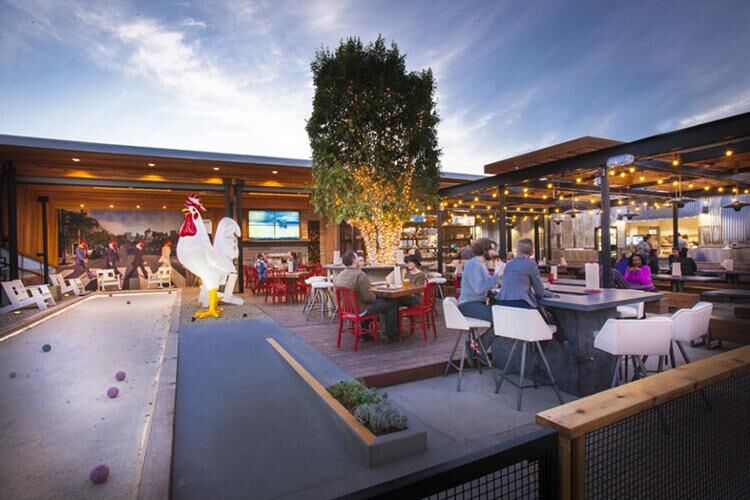Restaurants Spur a Public Transportation Movement
“Who needs parking? Everyone Ubers now!” one restaurateur suggests. But that’s an economically entitled sentiment. Not everyone can afford a restaurant meal and a round-trip in a Lyft. The main problem with San Diego’s public transpo is that it’s not very good (hey, we’re working on it); the second problem is, we’re devoted car monotheists. It may seem like a stretch, but if whole city blocks (like Gaslamp or Little Italy) are shuttered to cars, it would almost surely send more brains and money to improving public and alternative transportation—and incentivize us to actually use it.
Ridesharing Booms
In the meantime, said anonymous restaurateur has a point. With fewer parking spaces and great mass transit far from an overnight fix, ridesharing will go up dramatically. The ramifications are still being debated, but the industry has about a two-star rating when it comes to treatment of drivers.
Paper Menus Fade Out
The pandemic gave everyone a crash course on QR codes. Single-use menus are yesterday’s unnecessary landfill matter and will not be returning to dinner service at places like Animae downtown.
The Tipping Debate Boils Over
The industry can’t find enough employees. Two reasons (of many) are massive pandemic furloughs and the ugly pay gap between tipped and untipped staff. Add this to other proven negative effects of tipping (sexual harassment, racism), and we’re headed for an intense debate about how to change the business model to become more equitable and ditch tipping altogether.
Goodbye Blue Monday
The labor shortage is not going to magically solve itself. This crisis is existential. So restaurants will go dark during less profitable times—say lunch, or Monday. “By closing our restaurants one day a week, Mondays, we’ve been able to save energy and stress trying to hire additional staff,” says Duke Huynh, founder of Pho Ca Dao.
Prices Level Up
Americans are addicted to cheap food. But the hidden price is paid by restaurant employees. To pay higher wages, the cost of a burger has to go up. Add the fact that the pandemic wrought havoc on supply chains and distribution (which jacks up the price of raw ingredients), and the price of dinner in 2022 may sting a bit.
Food Delivery, On Their Terms
Food delivery isn’t going anywhere, but chefs and owners are optimistic that the high fees charged by third-party apps will. Jesse Paul, executive chef of Westerly Public House, says that before the pandemic, there was almost a stigma attached to getting takeout or delivery—and now that’s gone: “I’m fairly confident a new business model will emerge that will allow the restaurant and the delivery service to profit fairly. The demand is here, and most likely not going anywhere.”
Food That Travels Well
As part of the rise in food delivery, you’ll see a rush on menu items that travel well—grilled meats and vegetables, barbecue, wings, fried chicken, pastas, poke bowls, sushi, rice bowls. “That’s why I’m trying to create a bento box,” says Junya Watanabe, owner of RakiRaki Commons. “You can eat it at home or the office. It’s convenient, but still high-quality, gourmet food.”
Experiential Restaurants Rule
Ghost and virtual kitchens will take a big chunk out of restaurants that don’t invest in the experience—whether that’s over-the-top design, chef’s counters, retro video games, cornhole, or just a really likeable bartender with a decent vocabulary. “Food is experiential,” says Mike Rosen, owner of The Crack Shack and Juniper and Ivy. “Restaurants that don’t execute on food, service, and experience will be toast.”
Chains, Chains, Chains
Some predicted that restaurant closures would create a glut of available spaces, lowering the rent and paving the way for mom-and-pops. But that hasn’t proven true—and after this year, landlords are hesitant to lease to undercapitalized restaurants. “Ultimately I think the landscape will be dominated by big money-backed businesses that can sustain the strain,” says Jesse Paul. Rosen agrees: “Publicly traded hospitality companies certainly had access to cheap capital to withstand the pandemic. Many had tens or hundreds of millions in the bank, yet still negotiated rent concessions.”

Experiential restaurants like Crack Shack are likely to draw more attention in a post-pandemic landscape
PARTNER CONTENT
Paul Body













